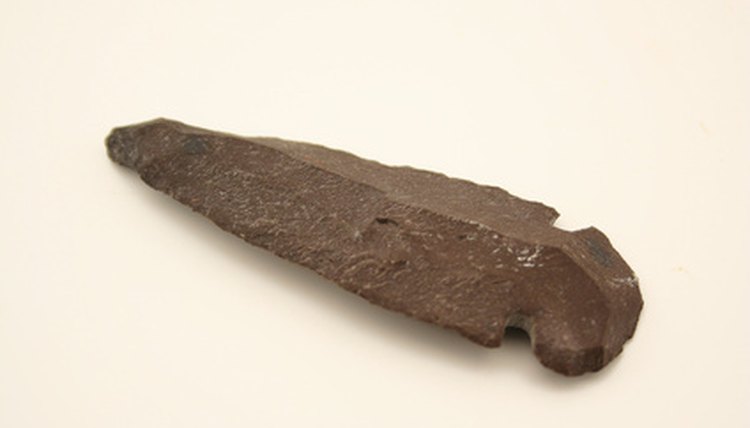Short Bow Vs. Long Bow

Different types of bows have different attributes and are used in different situations. The basic difference between a short bow and a long bow is that the longbow is traditionally about as long as the user is tall. The short bow is technically any bow shorter than 5 feet 5 inches, but it is typically about 3 feet long. The differences in length change many aspects of when and how the bow is used.
Draw Length
Short bows naturally have shorter draw lengths than long bows. The draw length is the distance you can pull back the arrow back before releasing it. A long bow typically allows you to draw the arrow back to your cheek bone. A short bow, on the other hand, typically draws to somewhere between your elbow and dominant shoulder. Treating the wood or using other techniques to make the wood more flexible can increase draw length. For example, recurve bows are made with wood that is specially treated and carved so that the tips of the bow point away from the user. This shape increases the flexibility of the wood and allows recurve bows to be made shorter without sacrificing too much draw length.
Physics of Bows
Energy = Force * Distance. When you fire a bow, your hand is pulling back on the string with a certain force. How much force you are using is partly determined by the stiffness of the wood. The force is applied through a distance which is equal to the draw length of the bow. In other words, the more difficult the string is to pull back, and the farther back you pull the string, the more energy will be transferred to the arrow.
Short Bow Disadvantage
Because of the shorter draw length of the short bow, the distance component of the equation mentioned above is reduced. The archer is applying the force over a shorter distance. This means that the arrows in a short bow will not fly as fast because they do not have as much kinetic energy.
Advantages of Short Bows
The shorter draw length of the short bow means that the bowman can fire the arrows faster because there is less time spent pulling back the string. The short bow is also more effective in tighter spaces, as it requires less elbow room to fire.
Traditional Use
Typically, soldiers garrisoned in castles and firing from secure positions would use long bows. Short bows were typically used by fighters who rode horses. Long bows were simply too clumsy and large to use on horseback. Short bows are easier to carry, and they are more handy for firing while kneeling or hiding behind something. Short bows were also good for hunting or fighting in wooded areas, where longer bows might snag on trees and branches.
